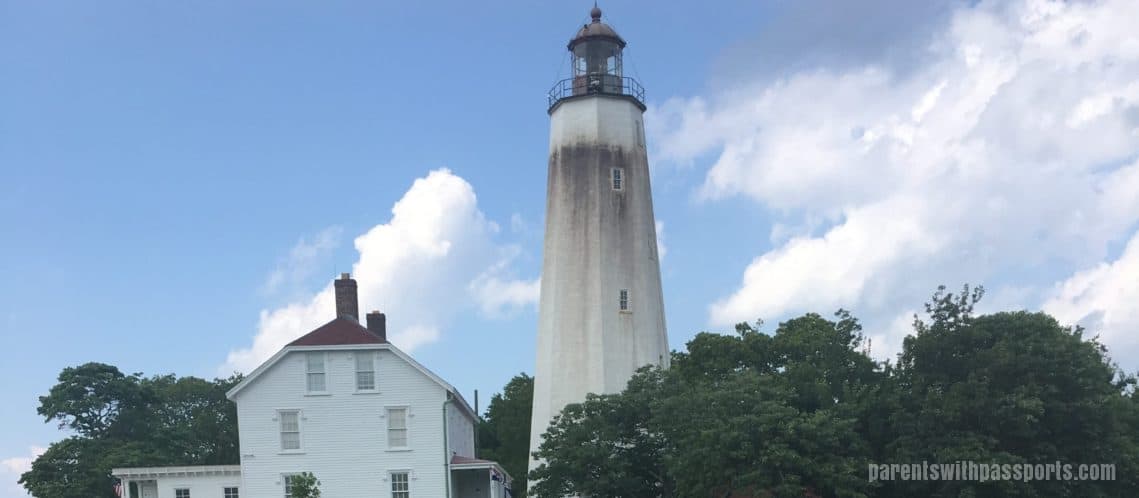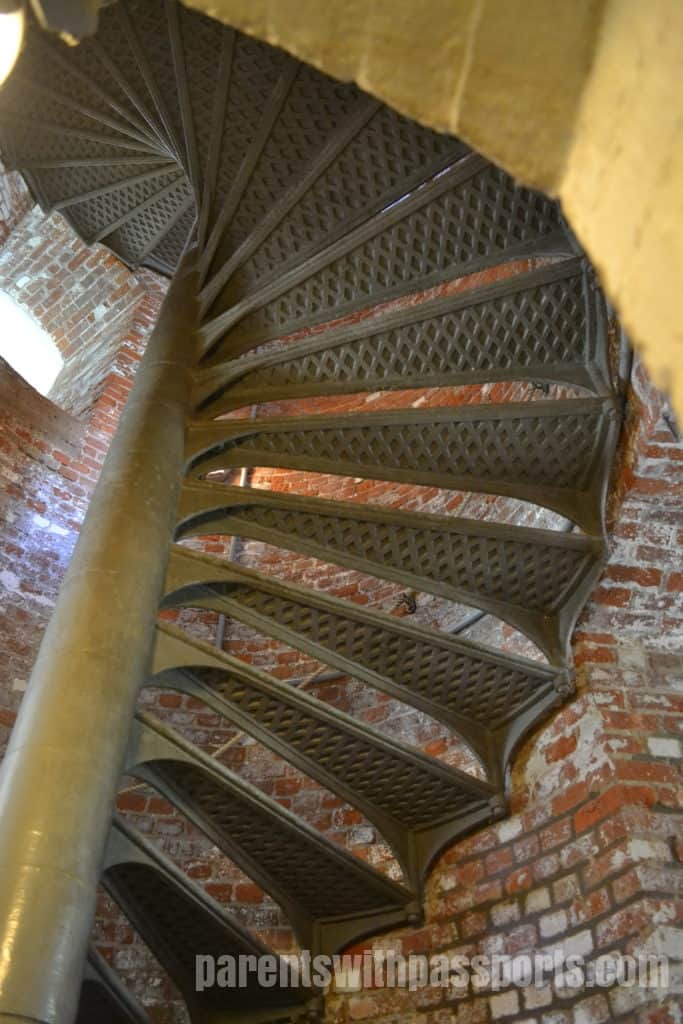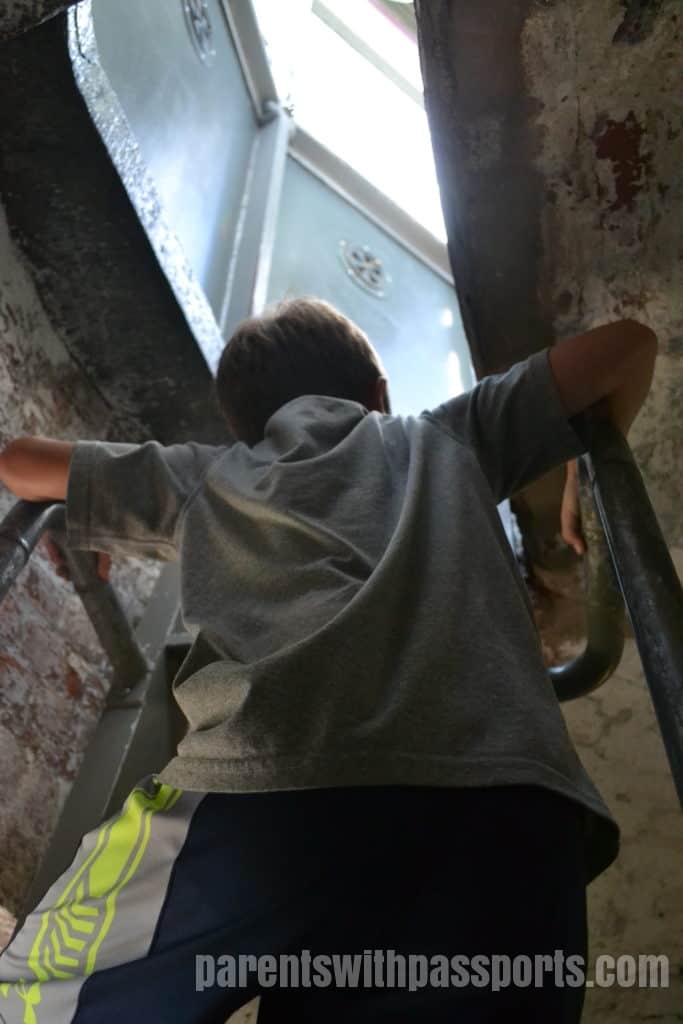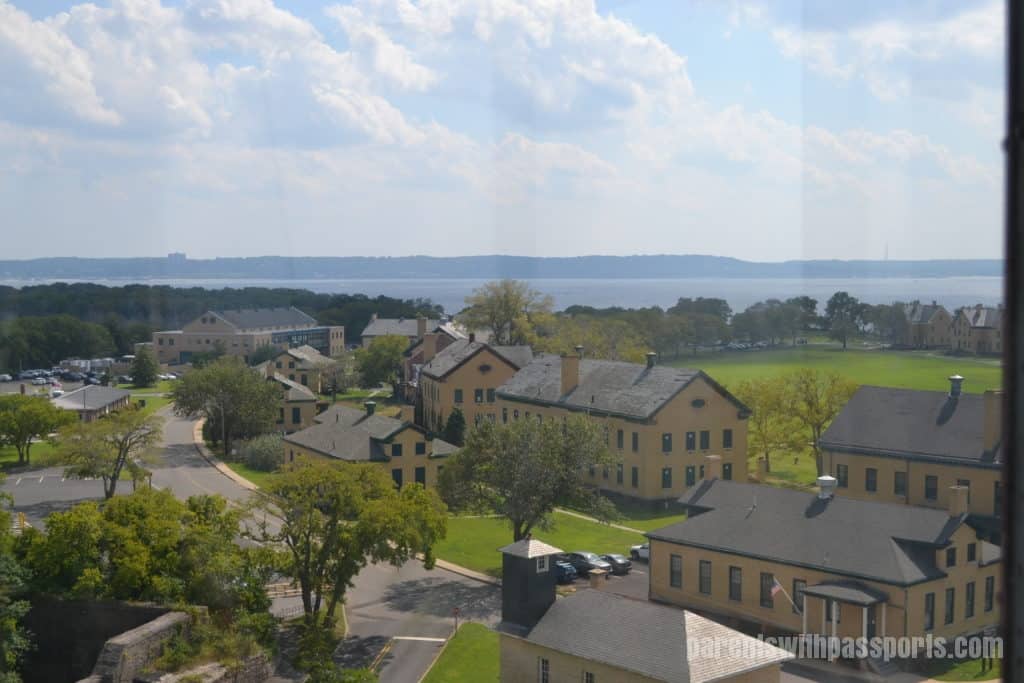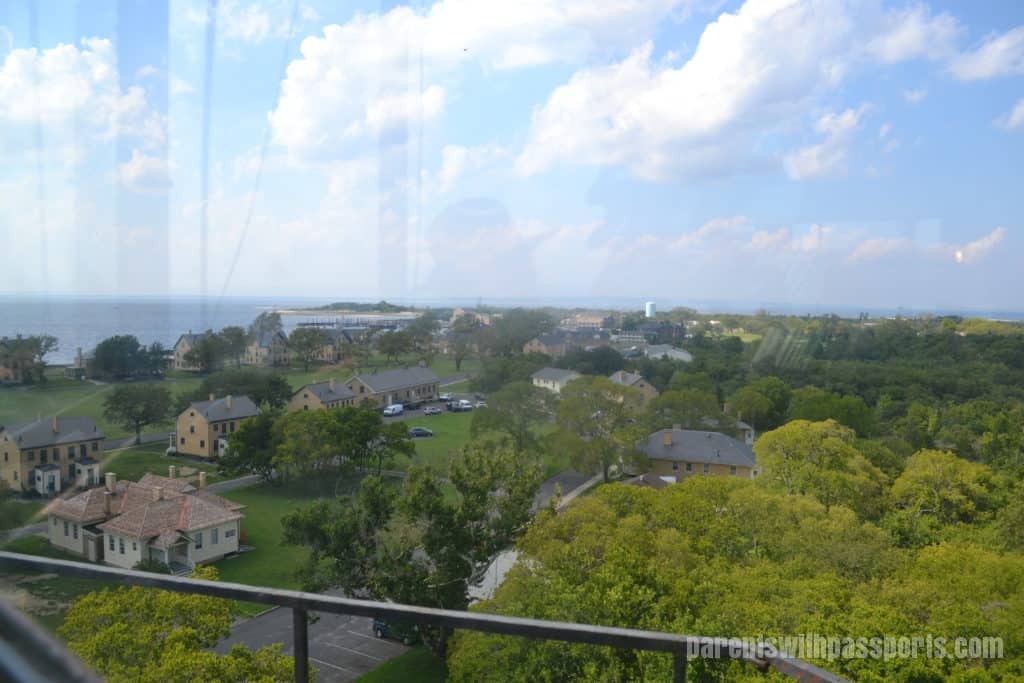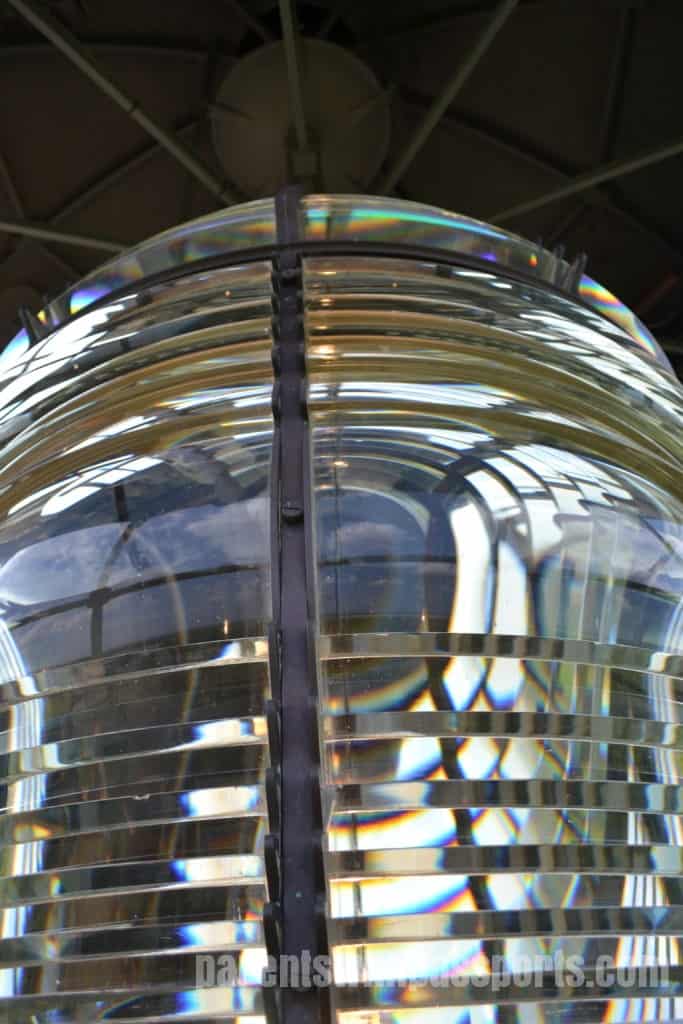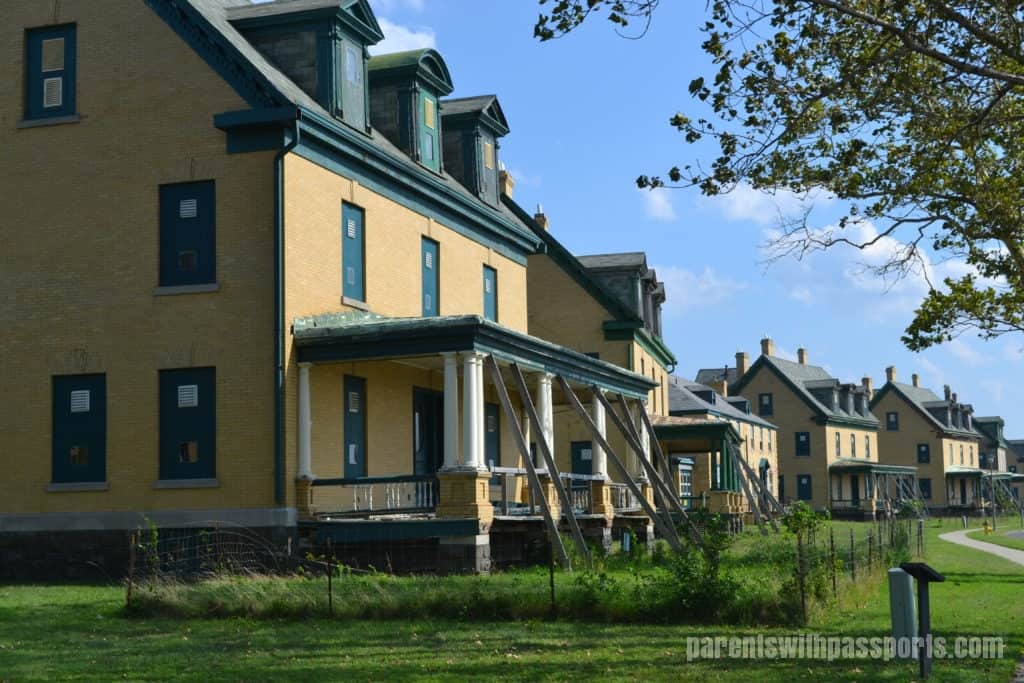Sandy Hook is a barrier peninsula in central NJ with the Atlantic Ocean to the east and the Shrewsbury River to the west. Discovered by Henry Hudson, it is now a National Park comprised of beaches, a lighthouse, a fort, and an active US Coast Guard station. On a clear day it boasts views of the Manhattan skyline.
The majority of visitors come to Sandy Hook for the beaches and recreation. It’s convenient to many parts of Central New Jersey and an easy ride across the NY Harbor for Manhattanites. There are multiple public beaches (including a clothing-optional beach) and miles of biking and hiking trails that allow you to explore the 2,000+ acre peninsula. There are no entrance fees to the park but a $15 parking fee is charged for beach-goers. (The parking fee is waived if you are just visiting the historic sites.)
But Sandy Hook is more than just beaches, and when we visited we were there for the history. The Sandy Hook Lighthouse is the oldest continuously operating lighthouse in the US, and Fort Hancock is a Civil War era Amy post that was deactivated in 1975 and taken over by the National Park Service. Both sounded like interesting stops for our boys.
Our first stop was the lighthouse. Originally built in response to several shipwrecks in the NY Harbor, it was first lighted on June 11, 1764. It continues to guide ships safely past the peninsula and into the harbor. Today it is a National Historic Landmark and can be toured for free every half hour in the afternoon. Note that there is a 48 inch height requirement to climb the tour, verified against an official mark on the doorjamb. Because of the cramped quarters, tours are limited to 10 people and are on a first-come first-served basis.
The top of the lighthouse is accessed by a tall circular iron stairway and then a ladder to get to the top platform. The kids enjoyed the adventure of climbing up to the top.
At the top, the views of the fort and the waters beyond were impressive. Interestingly, the lighthouse is now approximately a mile and a half inland from the water but when it was built, it was only 500 feet from the tip of the hook. Longshore drift has changed the shoreline significantly on the hook.
Our tour guide gave us some history of the lighthouse. During the Revolutionary War, NY Congress was worried that the lighthouse would either help the British navigate into the harbor for an attack or fall into enemy hands. In order to keep these things from happening, he ordered it dismantled. Despite these efforts, the lighthouse fell under British control and remained that way for most of the war. After the war, NY and NJ fought over control of the lighthouse. Although it stands on NJ soil, the lighthouse was actually funded by a NY lottery and both states claimed rights to the lighthouse. The state fight became a moot point when all lighthouses were taken over by the federal government in 1789. Little changed around the lighthouse for the next one hundred years until the 1890s, when Fort Hancock was built on the land surrounding the lighthouse and gun batteries and canons were installed nearby to protect the harbor.
The lens itself was really interesting. It is a 3rd order Fresnel lens, which makes it an intermediate sized lighthouse lens standing approximately 5 feet tall. It is illuminated by a 1000 watt bulb and is visible from sea up to 19 miles away.
After the trip back down the lighthouse, we headed over to check out some of the old fort buildings. At its peak in World War II, the fort housed more than 7,000 soldiers. The fort changed as warfare styles changed and during the Cold War, anti-aircraft guns and Nike air defense missiles were installed. Those defenses remained until the fort was decommissioned in 1974.
Today the trademark yellow brick buildings can be seen all over the tip of the hook, but unfortunately most have fallen into a state of disrepair and are unsafe to enter. In an unusual attempt to save the buildings, the park has made several of them available for lease to the public. Thus far, investors have leased two buildings, restored them, and put them up for rent as vacation homes, and more lease deals are in the works.

History House, one of the houses along Officers’ Row, is a living museum open to visitors. This restored home was built in 1898 but is decorated in the World War II era style, the time period which represents the fort at the height of its population. With 18 total houses on Officers’ Row, this is one of the 11 houses that were designated for lieutenants. For a single family home, the house was spacious. The first floor was large and had plenty of room to entertain. The second floor housed the family bedrooms, and the third floor was designated as the maid’s quarters. It was interesting to walk through the house and see the period-appropriate decor, as well as actual pictures of the house during the early 1900s. There was also a knowledgeable park ranger inside the home available to answer any questions.
While it was sad to see the fort building in such an advanced state of deterioration, it was still interesting and educational to walk around and imagine what it must have looked like in its heyday.
We enjoyed our adventure on Sandy Hook. While the park also has nice beaches and recreational opportunities, don’t overlook the historical significance of the site. Both the lighthouse and the fort offer interesting learning opportunities for kids and adults alike.
